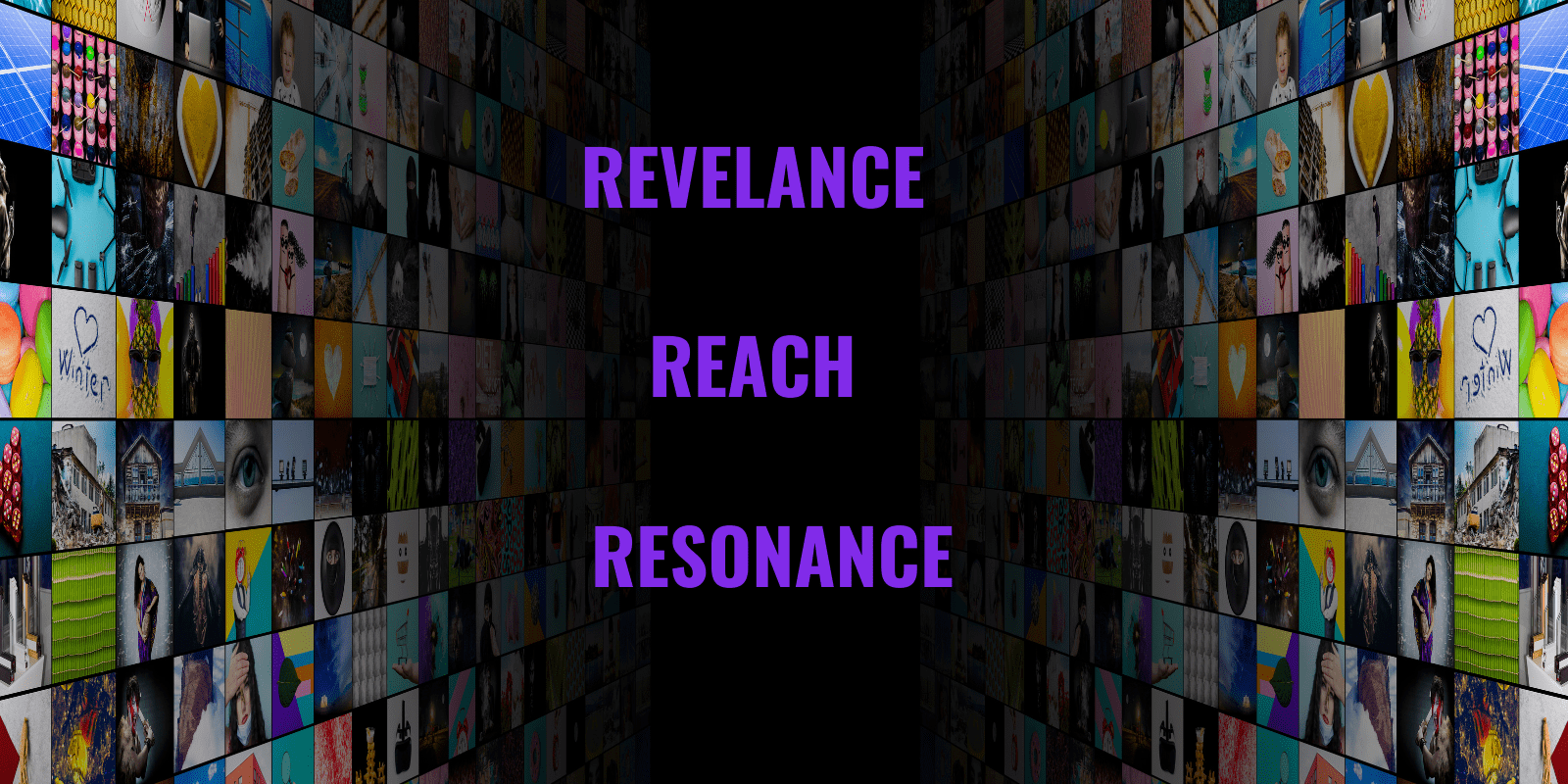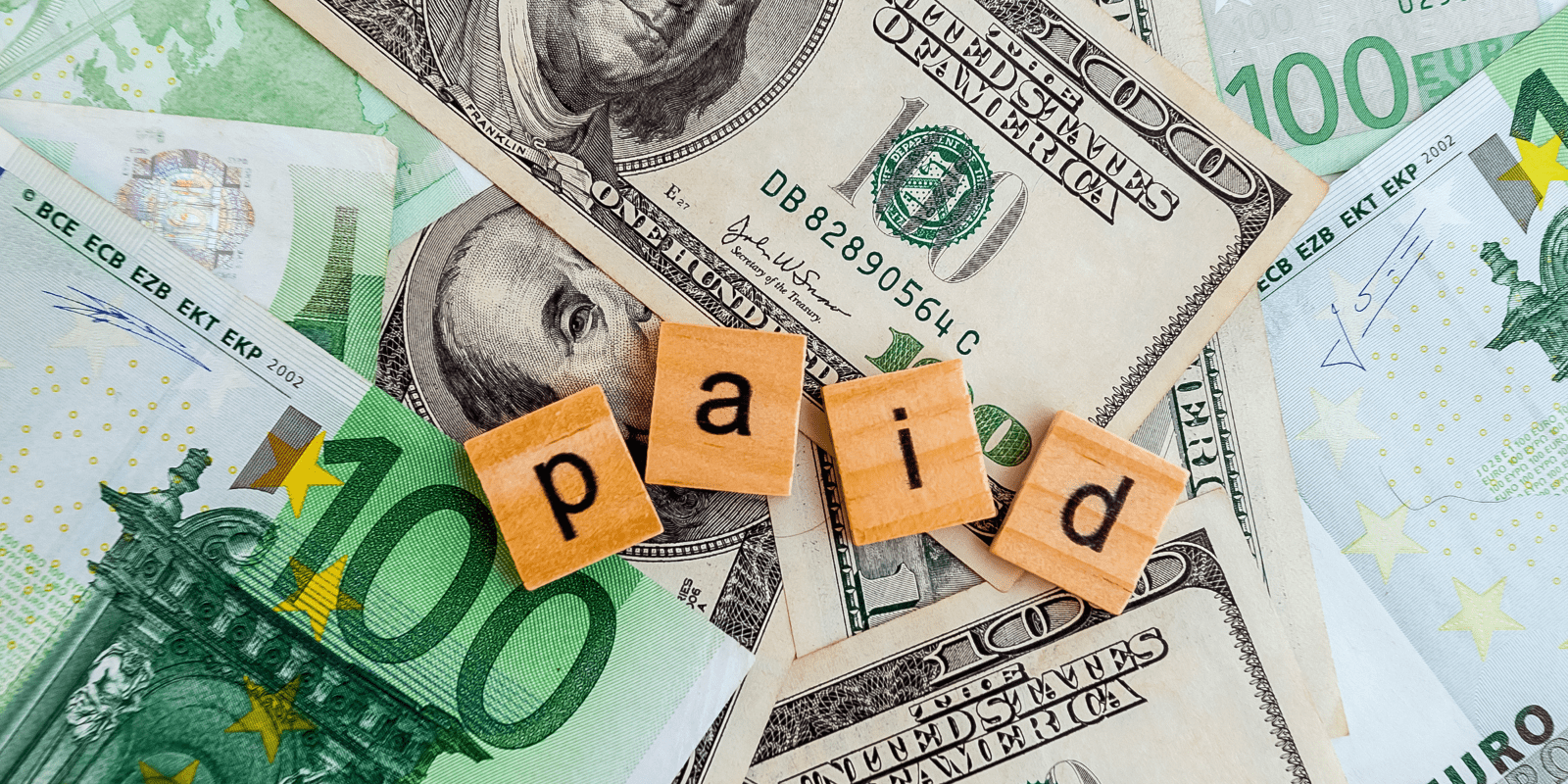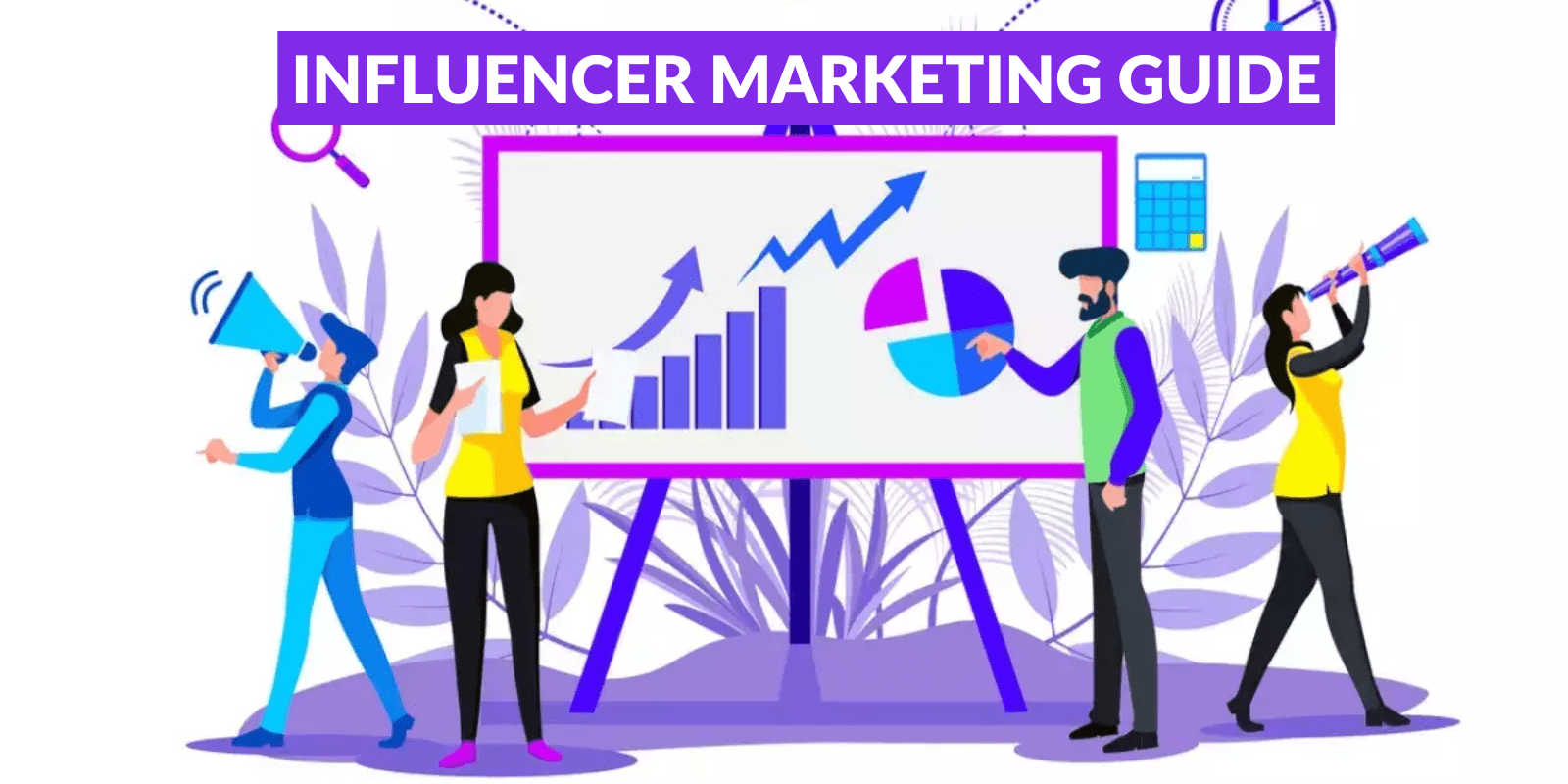Amidst the ever-evolving digital landscape of today, influencer marketing has arisen as a formidable strategy for brands endeavoring to establish resonant connections with their intended audience while fostering substantial engagement.
This comprehensive compendium on influencer marketing stands as an authoritative guide, delineating the intricate path through this perpetually evolving discipline. It dispenses invaluable insights and pragmatic recommendations tailored to empower businesses in harnessing the complete potential latent in influencer collaborations.
From the meticulous identification of well-suited influencers and the meticulous crafting of impactful campaigns, to the meticulous measurement of return on investment and the cultivation of enduring partnerships, this guide serves as an intellectual arsenal for marketers, endowing them with the requisite acumen and resources to strategically optimize the influence intrinsic to influencer marketing ventures.
Centered upon the pillars of authenticity, alignment with discerning audiences, and the astute leveraging of influencers’ trust and credibility, enterprises can unlock novel avenues for brand exposure, amplify social validation, and meticulously cultivate enduring affinities with their discerning clientele.
Set out on a transformative odyssey across the domain of influencer marketing, as we delve sagaciously into intricate strategies, paradigmatic practices, and illustrative case studies that vividly underscore the immense potential embedded within this commanding marketing instrument.
Table of Content
- What is influencer marketing?
- Difference between influencer marketing and celebrity endorsements
- Benefits of influencer marketing.
- Which platform does the influencer use the most?
- Importance of 3 Rs of influence
- Types of influencers
- How much are influencers paid?
- What effects will metaverse have on influencer marketing?
What is influencer marketing?

Influencer marketing is a strategic collaboration between prominent social media personalities and brands, aimed at promoting products or services. This marketing approach has gained significant traction and regulatory attention since its inception, leading to regulations such as the “Mommy Blogger law” in the United States, as well as similar regulations in China, India, and the United Kingdom.
Over the past five years, influencer marketing has experienced exponential growth on platforms like Instagram, YouTube (in Western countries), and Pinduoduo, WeChat (in China). In 2022, the influencer marketing economy reached an impressive valuation of $16.4 billion.
The rise of influencer marketing was anticipated by McKinsey in 2014 through a comprehensive survey involving 20,000 European consumers. The study highlighted the significant impact of “power influencers” at the time but also identified an emerging and largely untapped market of less active influencers with smaller follower bases. This prediction has since materialized with the ascent of micro- and nano-influencers.
Brands are increasingly embracing influencer marketing campaigns due to their effectiveness for consumers, influencers, and their own marketing objectives. Even prior to the 2014 survey, social media had already begun to shape consumer purchase decisions.
Recent analyses have provided further evidence, demonstrating a positive return on investment (ROI) for brands leveraging influencer marketing strategies.
Moreover, the allure of becoming an influencer has attracted a substantial number of aspiring individuals. A survey conducted in 2019 among millennials and Gen Zers revealed that 54 percent of respondents expressed their desire to pursue influencer careers if given the opportunity.
While the duration of this highly dynamic market trend remains uncertain, social media platforms continue to thrive, presenting ample opportunities for brands and individuals to capitalize on the current favorable conditions.
Beyond physical attributes, several factors contribute to the designation of someone as an influencer. Understanding the intricacies of influencer marketing and its operational dynamics is essential for navigating this rapidly expanding phenomenon and projecting its future trajectory and running successful influencer marketing campaigns.
Difference between Influencer marketing and celebrity endorsement

Brands have long utilized celebrity endorsements as a means to promote their products, a practice that predates the emergence of athletes on cereal boxes. However, influencer marketing and celebrity endorsements differ in key aspects.
Celebrity endorsements often involve substantial investments by companies, yet determining the exact return on that investment can be challenging. The impact and effectiveness of celebrity endorsements may rely more on subjective factors, making it difficult to precisely quantify their impact on brand awareness and consumer behavior.
In contrast, influencer marketing offers distinct advantages in terms of ROI measurement. Companies engaging in influencer marketing can leverage the digital nature of social media platforms by running successful influencer marketing campaigns on various social media platforms to closely monitor various engagement metrics, including likes, shares, comments, and conversations generated by the influencer’s content on social media.
This level of granular tracking with the help of different influencer marketing tools enables brands to obtain real-time data on the performance and reach of their influencer campaign. By analyzing these metrics, companies can gauge the effectiveness of their influencer collaborations and assess the tangible impact on brand visibility, customer engagement, and, ultimately, sales.
Furthermore, the ability to measure ROI in influencer marketing allows brands to optimize their influencer marketing strategy and allocate resources more effectively toward their influencer campaign.
By closely monitoring the performance of different influencers, on several social media platforms, companies can identify which collaborations yield the most favorable outcomes in terms of audience engagement and conversions.
This data-driven approach enables brands to refine their targeting, select influencers whose audience aligns with their target market, and maximize the return on their marketing investment.
In summary, while celebrity endorsements may offer certain benefits, influencer marketing provides a more transparent and measurable approach to determining ROI. The availability of data on various engagement metrics empowers brands to evaluate the effectiveness of their influencer campaigns, make informed decisions, and allocate resources strategically.
By leveraging this data-driven approach and forming a well-researched influencer marketing strategy, companies can optimize their influencer marketing efforts and achieve meaningful results in terms of brand awareness, consumer engagement, and sales.
Benefits of influencer marketing

Higher ROI
A well researched influencer marketing campaign yields a significant return on investment (ROI), making it a valuable strategy for marketers. According to research, one in four marketers who currently engage in influencer marketing has identified it as offering the second highest ROI among various marketing trends.
This data underscores the effectiveness of influencer marketing campaign and provides assurance that investments in this form of marketing will yield substantial returns. For instance, a fashion brand collaborating with a popular fashion influencer to promote their latest collection can track the increase in website traffic, sales conversions, and brand mentions, thus demonstrating the positive ROI generated through the partnership.
Helps in saving money
Incorporating influencers into your marketing strategy can yield significant cost savings, as evidenced by the impressive ROI they provide. This means that the resources allocated to influencer marketing are indeed valuable and worthwhile investments.
To maximize the efficiency of your influencer campaigns budget, it is particularly advantageous to collaborate with smaller micro-influencers who have a relatively modest following of under 100k followers or subscribers.
One noteworthy aspect of partnering with small influencers is their cost-effectiveness. When marketers work with both large and small influencers, a substantial 44% of them affirm that the most significant benefit of engaging with small influencers is the reduced expense associated with such collaborations.
This indicates that smaller influencers tend to offer more favorable pricing structures or are more open to negotiation, making them an attractive option for brands aiming to optimize their marketing budgets.
By leveraging the cost advantages of working with small influencers, businesses can allocate their resources more efficiently, potentially leading to higher returns on their investment.
This cost-saving aspect, combined with the potential for impactful collaborations and audience engagement, makes partnering with small influencers an appealing choice within the realm of influencer marketing.
Gen Zers trust them more than any of their family members
In accordance with Gen Zers, influencer recommendations on social media hold a higher level of trust and influence compared to recommendations from friends and family. This shift signifies a significant departure from previous trends, where the opinions of personal connections and consumer reviews were considered the most impactful factors in purchase decisions.
Annabelle Nyst, Senior Content Manager at Brand Social, underscores the power of influencers by stating, “Their followers attentively heed their guidance in the same manner they would listen to advice from close acquaintances or family members. This level of influence surpasses the impact of conventional advertising copy.” This observation emphasizes the substantial authority influencers wield in shaping consumer perceptions and driving purchasing choices.
The trustworthiness and credibility established by influencers within their follower base render their recommendations remarkably influential and persuasive. Consequently, marketers and brands acknowledge the immense value of harnessing influencer endorsements to effectively engage and resonate with the Gen Z demographic.
By tapping into the profound influence influencers exert over their followers’ purchasing behaviors, and forming a well-planned influencer marketing strategy, businesses can strategically leverage this powerful phenomenon to establish stronger connections on various influencer marketing platforms and drive consumer engagement.
Helps in increasing awareness
According to the 2022 Marketing Industry Trends Report, the influencer marketing industry emerged as the foremost and most effective trend, delivering the highest return on investment (ROI) for businesses in terms of generating authentic content, establishing social proof, and cultivating brand awareness.
Annabelle Nyst highlights the significant impact of influencer campaigns on social media in building brand awareness and fostering trust for products or services. The true power of influencer marketing or social media marketing lies in its ability to harness the influential force of word-of-mouth marketing.
Furthermore, Nyst presents a thought-provoking scenario: On one hand, there is a brand asserting the superiority of its product and proclaiming its exceptional qualities.
On the other hand, there is an individual whom the audience already knows, trusts, and respects, endorsing the product and expressing genuine enthusiasm. In this situation, the key factor at play is trust. Which source is more likely to instill confidence and credibility in the minds of the audience?
In summary, this comprehensive report underscores influencer marketing as the dominant and highly effective trend for generating authentic content, establishing social proof, enhancing brand awareness on social media, and reaching more and more people.
Annabelle Nyst’s insights emphasize the influential role of trusted individuals in shaping consumer perceptions and building trust, highlighting the significant impact of influencer endorsements in fostering consumer confidence and engagement.
Boosts sale
Recent data indicates that a significant proportion, specifically 33%, of individuals belonging to the Gen Z demographic have made product purchases within the past three months directly influenced by recommendations from influencers on social media and other platforms.
This compelling statistic underscores the extraordinary potential of influencers to profoundly impact consumer behavior and drive purchasing decisions on behalf of your business. Notably, this influence is particularly potent when targeting younger audiences via social media marketing.
The ability of influencers to sway the purchasing choices of Gen Zers reflects their unique capacity to connect with and engage this demographic effectively. By cultivating a loyal and attentive follower base, influencers are able to establish a level of trust and credibility that resonates with their audience.
Consequently, when influencers endorse or recommend a product, their followers are inclined to act upon these recommendations, leading to tangible sales and increased brand visibility.
This trend emphasizes the significance of incorporating influencer marketing strategies to engage with younger audiences and maximize the potential for conversions.
By strategically collaborating with influencers who hold sway over Gen Z consumers, businesses can tap into the influencers’ ability to drive purchases and leverage their distinct power to influence the buying decisions of this influential demographic segment.
Helps in building long-term relationship
Cultivating long-term partnerships with influencers and content creators is a valuable asset highlighted by marketers. Such collaborations offer numerous benefits for brands. Firstly, establishing enduring relationships allows for enhanced credibility within the influencer’s audience.
When followers witness consistent engagement, ongoing utilization of your products and services, and a demonstrated trust in the quality and effectiveness of your offerings, their confidence in your brand is further solidified.
Moreover, long-term partnerships with influencers contribute to increased brand perception and loyalty. The continuous association between your brand and the influencer creates a sense of reliability and authenticity.
As the audience of social media influencers observes the sustained collaboration, it reinforces the influencer’s endorsement and fosters a stronger bond between your brand and their followers. This, in turn, fosters a heightened level of trust and inclination to engage with your products or services.
In summary, developing long-term relationships with influencers and content creators not only bolsters credibility within their audience but also leads to elevated brand perception and loyalty.
By nurturing these enduring partnerships, brands can establish a powerful and enduring presence within the influencer’s sphere of influence which can be proved to be a successful social media marketing.
Helps in providing authentic content in human way
Influencers offer a distinct advantage by enabling the sharing of authentic content in a relatable and human manner. As affirmed by Annabelle Nyst, influencer marketing not only helps reach the intended audience but also ensures that the messaging feels genuine and personal.
Influencers, who have built dedicated communities based on trust, deliver recommendations and mentions that resonate as genuine endorsements from real individuals. This authenticity fosters a deeper connection with their audience, allowing brands to leverage pre-existing relationships and inspire sales.
As consumer preferences shift towards more humanized content and away from overtly sales-driven advertisements, the value of recommendations from trusted influencers becomes increasingly significant.
By partnering with influencers, brands can tap into the existing rapport and loyalty that these individuals have cultivated, fostering a deeper connection with the target audience. This approach aligns with evolving consumer preferences, emphasizing the importance of genuine engagement and relationship-building in driving successful marketing campaigns.
In summary, influencers facilitate the sharing of authentic content in a relatable and human manner. By leveraging their recommendations and mentions, brands can establish meaningful connections with their target audience and inspire sales.
This approach aligns with the changing dynamics of consumer preferences, prioritizing genuine engagement and relationship-building as crucial elements of effective marketing strategies.
Which platform does the influencer use the most?

In a comprehensive survey conducted in 2022, encompassing over 2,000 global brands, an impressive 80 percent of respondents reported utilizing Instagram as their primary platform for influencer marketing.
However, the landscape is continuously evolving, and TikTok has emerged as a platform of increasing significance. In the subsequent study conducted in 2023, 56 percent of participating brands revealed their adoption of TikTok for influencer marketing campaigns, indicating its growing prominence in the industry.
While Instagram and TikTok currently dominate the influencer marketing landscape, brands mustn’t overlook the potential of alternative platforms. It is crucial for each brand to tailor their influencer marketing strategies to suit the specific characteristics and preferences of their target audience.
This may involve identifying influencers with a substantial following on platforms such as YouTube or exploring niche platforms that align closely with the brand’s unique audience.
Research conducted by Upfluence, a prominent influencer marketing platform, further supports the notion that certain platforms attract specific categories of influencers based on their follower count.
For instance, micro and medium influencers tend to gravitate towards Instagram, while macro and mega influencers exhibit a preference for TikTok. This insight underscores the importance of comprehending the platform preferences of different influencer segments and tailoring campaigns accordingly.
In summary, while Instagram and TikTok currently dominate the influencer marketing landscape, brands should remain open to alternative platforms based on their target audience and influencer preferences.
By customizing their strategies to align with the platform preferences of different influencer segments, brands can optimize their influencer marketing efforts and effectively engage with their desired audience.
The 3 Rs and their importance

The concept of influence is comprised of three essential components:
- relevance
- reach
- resonance
Relevance
A key factor in selecting an influencer is their relevance to your business and industry. It is crucial to partner with influencers who share content that aligns with your brand and who have an audience that closely matches your target audience.
For example, in an effort to showcase their inclusive swimsuit sizing, Adore Me collaborated with Remi Bader, a body positive influencer. By leveraging Bader’s platform, Adore Me successfully exposed their product line to a dedicated and organic audience, as demonstrated by the significant view count on Bader’s TikTok video and the high engagement on her Instagram Reels.
The brand further utilized Bader’s content in an Instagram ad combined with an Instant Experience, resulting in a substantial increase in subscription opt-ins and a more cost-effective customer acquisition compared to their regular Instagram ad campaigns.
Reach
Another crucial consideration is the reach of an influencer, which refers to the potential number of individuals that can be reached through their follower base. While it is true that a small audience can still be effective in certain cases, it is important to ensure that the influencer has a sufficient following to align with your influencer campaign objectives and target a significant number of potential customers.
Resonance
Resonance plays a vital role in influencer marketing as well, representing the level of engagement an influencer can create within their audience that is relevant to your brand. It is essential to note that a large follower count does not necessarily guarantee successful outcomes.
In fact, niche influencers with a smaller but highly dedicated and engaged following can often deliver more impactful results. These influencers have established a strong connection with their audience and can effectively drive engagement and conversions.
In conclusion, when selecting influencers for your marketing campaigns, carefully evaluate their relevance, reach, and resonance.
Partnering with influencers who align with your brand, possess a suitable reach, and can generate resonance within their engaged audience will increase the effectiveness of your influencer marketing initiatives, leading to stronger brand awareness, higher engagement, and improved business outcomes.
Types of influencers

In the realm of influencer marketing, social media influencers are commonly classified into five tiers:
- nano influencer
- micro-influencers
- mid-tier influencer
- macro-influencers
- mega influencers.
It is crucial to identify the most suitable influencer tier for your specific project when formulating an influencer marketing strategy.
Nano influencers
Nano influencers are those social media influencers who typically have a follower count ranging from 1,000 to 10,000. These individuals are everyday people with emerging personal brands, and being an influencer is not their full-time occupation.
Despite their smaller audience size, nano influencers are valued for their high engagement rates and the trust they have established with their followers. They are particularly advantageous for growing e-commerce brands due to their affordability and the authenticity they bring to partnerships.
Micro-influencers
Micro-influencers, with follower counts ranging from 10,000 to 100,000, make up a significant percentage of Instagram creators, accounting for 47% of the total. They possess more compact and targeted audiences, resulting in higher levels of engagement.
Micro-influencers often have a dedicated following that they actively engage with on a regular basis. While they may have a slightly higher cost compared to nano influencers, they provide a more personalized and relatable approach in promoting businesses.
Mid-tier influencers
Mid-tier influencers are those social media influencers who fall into the range of 100,000 to 500,000 followers. Despite having a substantial following, these influencers maintain a well-segmented audience.
Collaborating with mid-tier influencers is advantageous when seeking maximum exposure within specific niches. They are also relatively more accessible and affordable to contact compared to larger influencers who often require interaction through representatives or agents.
Macro influencers
Macro influencers, are social media influencers whose follower counts are between 500,000 and 1 million and offer substantial benefits as brand collaborators.
They possess extensive experience in the influencer space, understand their target audience, and uphold the trust of their followers. Working with macro influencers ensures a highly relevant audience, broad reach, and streamlined collaboration processes.
However, their level of experience is reflected in their price range, estimated between $1,000 and $10,000 for collaborations.
Mega influencer
Mega influencers are social media celebrities with follower counts exceeding 1 million. These influencers, such as Ryan Trahan, Mr.Beast, and Unnecessary Inventions, possess massive reach and command a high level of credibility due to their established reputation.
Collaborating with mega influencers provides significant exposure for brands. However, the cost of working with this group can range from $10,000 to six figures, depending on the influencer.
In summary, the classification of influencers into nano, micro, mid, macro, and mega tiers offers distinct advantages and considerations based on their follower count and engagement levels.
By strategically selecting influencers that align with your brand, campaign objectives, and budget, you can effectively leverage their reach, engagement, and influence to drive brand awareness, engagement, and conversions.
How much are influencers paid?

Every influencer marketing agreement is unique due to the distinctive audience, follower list, and engagement metrics of each influencer. Influencers like swimsuit model and influencer Alexa Collins, boasting over two million followers, disclosed that she charges a minimum of $1,000 for a sponsored story on her Instagram account.
On the other hand, micro-influencer Tyler Chanel, focusing on sustainability, charges a minimum of $100 for a sponsored story, leveraging her more than 13,000 followers. Some influencers adhere to a rough estimate of $100 per 10,000 followers as an acceptable pricing formula, but there are no set rules or standards in the industry.
The potential earnings of influencers vary greatly. For example, one influencer mentioned earning approximately $5,000 per month exclusively through affiliate links, directing web users to an advertiser’s website.
Influencers also have the opportunity to secure substantial paychecks through brand deals. Another influencer, with a follower count of 275,000 at the time, revealed earning a remarkable $700,000 in just six months from brand collaborations.
In summary, influencer compensation is highly individualized, dependent on factors such as follower count, engagement, niche, and the specific terms of each partnership. Influencers with larger audiences may command higher fees, while micro-influencers may charge more modest amounts.
Ultimately, the earning potential for influencers extends beyond sponsorship fees, as affiliate marketing and brand collaborations can contribute significantly to their overall income.
What effects will Metaverse have on influencers marketing?

The metaverse, a nascent and intricate concept, signifies a progressive evolution of the internet. It is characterized as a dynamic 3D digital realm that enables individuals to partake in immersive experiences through technologies like virtual reality.
Within the Metaverse, people engage with peers, diverse content, cryptocurrencies, brands, and multiple virtual worlds. Recognizable platforms that embody elements of the metaverse include Animal Crossing, Fortnite, Minecraft, Roblox, and The Sims.
Delving into the future of marketing within the metaverse, it becomes evident that consumers exhibit a willingness to invest in virtual goods. This has led to the emergence of a robust $54 billion industry centered around direct-to-avatar sales.
Notably, renowned brands like Gucci have successfully ventured into the metaverse by selling digital versions of their products, such as the coveted Dionysus bag, at prices surpassing their physical counterparts. Nike, too, has embraced the metaverse by introducing virtual sneakers known as Nike Cryptokicks, while Chipotle seized the opportunity to offer real-life burrito vouchers to the initial 30,000 visitors of their virtual restaurant on Roblox.
Influencers are increasingly immersing themselves in the metaverse, actively participating and engaging with this transformative digital landscape. A prime example is the rapper Snoop Dogg, who not only released a music video within The Sandbox metaverse but also established his own dedicated “Snoopverse” on the same platform.
Within the Snoopverse, fans gain exclusive access to performances and content. The potential for brand-influencer collaborations within the metaverse appears boundless, reflecting the vastness and infinite possibilities inherent to this digital realm.
In conclusion, the metaverse represents a profound paradigm shift in the digital sphere, offering immersive experiences and opening new frontiers for consumer engagement. The propensity of consumers to invest in virtual goods, combined with the increasing involvement of influencers, underscores the significant marketing opportunities within the metaverse.
As this dynamic landscape continues to expand, brands and influencers can harness their creative potential to forge innovative collaborations and captivate audiences within this evolving digital realm.


